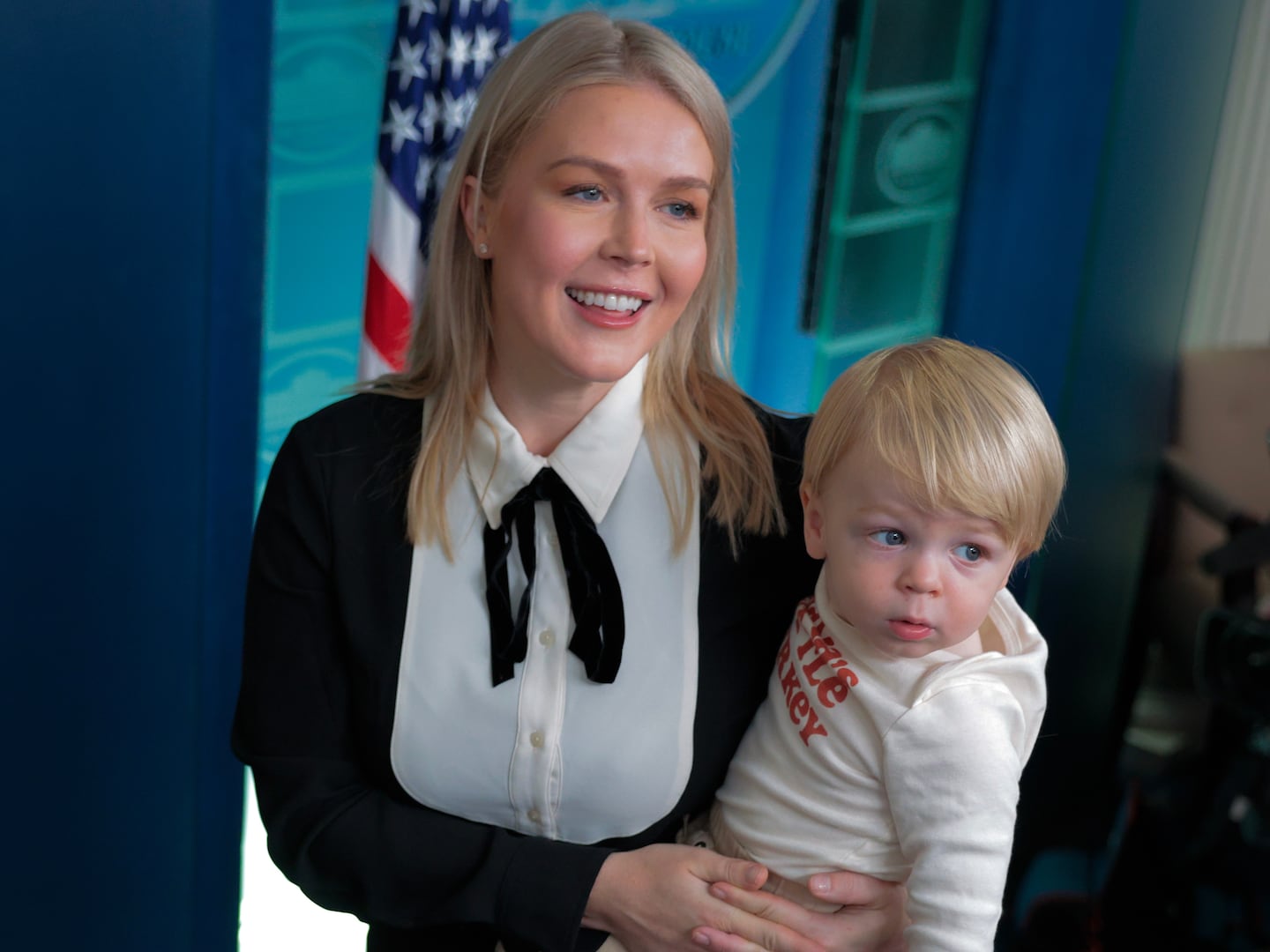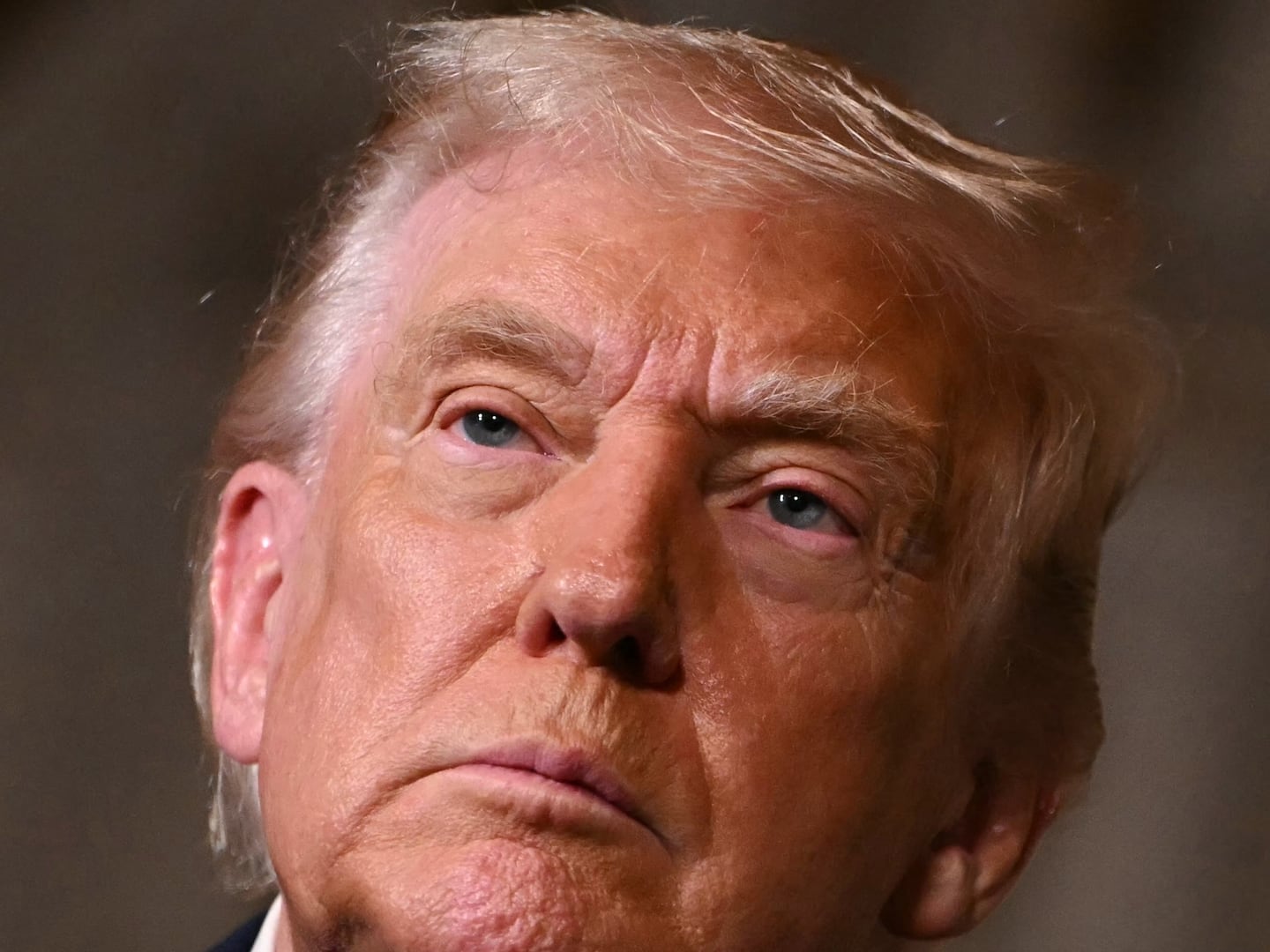In the flashy biopic Get On Up, Chadwick Boseman’s portrayal of music icon James Brown is nothing short of astonishing—so astonishing, in fact, that it sent Time magazine’s longtime film critic into a fit of temporary insanity. “Incarnating James Brown in all his ornery uniqueness, [Boseman] deserves a Pulitzer, a Nobel and instant election to the Rock and Roll Hall of Fame,” wrote Richard Corliss. This derelict display of criticism-as-caricature aside, the actor’s staggering transformation will give you the fever in a cold sweat.
The action opens in 1988, just a few months after that viral interview, and Mr. Dynamite’s fuse is short, to say the least. Sporting a green velour tracksuit and a plethora of gold chains, the 55-year-old struts into a building he owns in Augusta, Georgia. He’s cranky, and wielding a shotgun. Some poor, misguided soul—God help them—used Brown’s private bathroom, and it’s time for the big payback. The strung-out singer delivers a bizarre, elliptical spiel on personal responsibility, before accidentally firing his boom stick into the ceiling. Police are called, and a high-speed chase ensues.
“It was the true test of the movie to get that James down because it’s the one everybody knows,” says Boseman. In person, the strapping young actor doesn’t resemble the Brown in the slightest. At 6’, he’s about six inches taller than the diminutive showman, and with doe eyes and high cheekbones to boot. So, they had to rely on a bit of movie magic. “It was a combination of a bust James had done of himself, and then they scanned a bust of me using a 3D scanner, and they synced them together to create my James Brown face.” All in all, it took the 32-year-old about three hours in the makeup chair for the team to apply full-body prosthetics—wig included.
The film, directed by Tate Taylor (The Help), jumps around in time, chronicling Brown’s early days as the child of a battered mother (Viola Davis) and abusive father in Augusta, before shacking up at his aunt’s (Octavia Spencer) brothel. It also traces his days as a juvenile delinquent, and gradual rise up the R&B charts. All in all, Boseman portrays Brown from age 16 to 60—and quite convincingly.
“He’s a hard worker, and an artist,” Spencer says of Boseman. “The success of the film begins and ends with Chadwick’s believability as James Brown, and he really pulls it off.”
Initially, however, the prospect of playing the Godfather of Soul proved too daunting. Back in March of last year, Boseman’s manager, who had been “stalking the project,” presented the script to him. He turned it down immediately. It was one month before 42, a biopic featuring Boseman as trailblazing baseball star Jackie Robinson, was set to hit theaters.
“I’d just played Jackie Robinson, so there was no way to even think about playing another real person, let alone an iconic character,” he says.

Boseman cast the script aside. He shot the film Draft Day and participated in a Broadway workshop for the lead role in the Tupac-inspired musical Holler If Ya Hear Me. But Taylor was persistent. In July, he rang his manager again and said, “Tell him to stop being a pussy!” The challenge was accepted, and Boseman came in to meet the director.
According to Boseman, it was Taylor’s passion for the project that piqued his interest. “He was so Muhammad Ali about doing it, telling me, It’s going to be like nothing anyone’s ever seen,” says Boseman. “And when I read for him, it was just fun—and I knew I was in the presence of a good director with a strong vision who knew how to work with actors.”
But the young actor still had “apprehensions” about the singing and dancing—as did the studio, Universal. So, they hired a choreographer, Aaokomon “AJ” Jones, and the two spent three days working on a medley of “Can’t Stand It” and “Cold Sweat” that went into “Try Me.” They also designed a wig and jumpsuit specifically for the test. For Boseman’s second meeting, Taylor was accompanied by the cinematographer, producers, costume designer, and hair and makeup specialist.
“During the test, we tried all the dances and I nailed none of them,” says Boseman with a chuckle. “My ‘Mashed Potatoes’ were uncooked, my ‘Good Foot’ was a bad foot, and my ‘Get Up’ was a fall-down. Everything was messed up. But it was good enough for me to see what it would be like to work with everybody, and I saw how crazy it was all going to look.” Boseman was sold. He dropped out of Holler If Ya Hear Me (replaced by Saul Williams), and began prepping for the role in September—which gave him two months to become James Brown until the cameras started rolling in November.
One of the most impressive aspects of Boseman’s performance is the way he captures Brown’s signature raspy voice. It is spot-on, transcending mere mimicry. The studio hired Ron Anderson, an acclaimed vocal coach who’d worked with acts like Mary J. Blige, Alicia Keys, and Janet Jackson, to train him.
“It was a reshaping of the vocal chords,” says Boseman. While he doesn’t sing much in the film, which instead uses digitally smoothed live recordings to give the performances a concert feel, there are a few sequences where he indeed belts it out, so Anderson had Boseman train like an opera singer, doing hours of singing exercises every day. He’d sing for an hour, pause to eat, sing again, and so on and so forth. “Opera singers are constantly eating to protect their vocal chords,” he says.
And then there was the dancing. Get On Up is packed with dazzling, moneymaker-shakin’ musical performances from Brown’s storied career, including his performance at the Apollo in ‘62 (which later became a hit live album); opening for the Rolling Stones at the T.A.M.I. Show in ‘64; and the most jaw-dropping one—a Paris concert in ‘71 that sees Brown throw his entire being into the songs “Get Up (I Feel Like Being A) Sex Machine,” “Super Bad,” and “Soul Power.” The thing that set Brown apart, however, is his command over every facet of his show. He’s the quarterback, and like Peyton Manning’s furious hand signals at the line of scrimmage, each thrust and stomp and point by Brown is a cue to the band. “His feet are constantly moving and that’s the groove—the shoulders are moving one way, the head is moving another, the pelvis and feet are moving, too,” says Boseman, who lost about 15 pounds during filming from dancing alone. “It’s all keeping the pace for the band and hitting different parts of the beat, so out of that, he’s able to give signals. It’s like a freight train barreling down the tracks. Once you nail that down, you realize that all the dance steps emerge from that. The Camel Walk comes out of that, which is one of the hardest dances, along with the splits.” He pauses, and smiles. “But the dancing in the movie is all me.”
In addition to his choreographer and vocal coach, Boseman sought help from many of Brown’s surviving relatives, speaking at length with his second wife, Deedee, and daugthers Deanna and Yamma. Brown’s nephew, Darren, who toured with Brown in his later years, hired the band members that were used in the film, and Brown’s grandson, Jason Brown, was hired as a PA, and whenever Boseman needed a question answered, he’d tell Jason to phone his grandmother.
And the family members were very accommodating when it came to the material. They didn’t want a paint by numbers biopic, but a warts and all portrayal of the complicated music icon. While the film does shy away from his crazy later years, there are several disturbing episodes depicted, including two incidents of him hitting his wives, a scene where he smokes a joint filled with Angel Dust, his dehumanizing treatment of his underpaid band, and of course, that shotgun scene.
“The family wanted to show all of it—the good and the bad,” says Boseman. “I’d ask them, ‘OK, this scene with the shotgun… would he do this?’ And they’d say, ‘Yup. Do it all. That’s him.’”
Boseman also received some guidance from the film’s star producer, Mick Jagger. The Rolling Stones front man, whose band was upstaged big-time by Brown on the aforementioned T.A.M.I. Show, used to check out Brown’s shows when he was in his early 20s and tried to emulate the showman’s kinetic dance moves.
“I visited Mick’s hotel room in Beverly Hills and we just listened to James Brown for hours and hours—in particular, the Live at the Apollo album,” says Boseman. “We listened to various versions of every song that ended up in the movie. Mick would say, Listen to what he’s doing here. You see how he’s playing with the audience there? Do you hear that snap? He’s signaling the band. Mick studied James Brown closely, so he talked about the things he’d learned and picked up on from watching James over the years.”
Whereas his Jackie Robinson was a bit too stoic and brooding, never really allowing us inside, Boseman’s Brown is an absolute knockout—a performance brimming with soul. It’s such a spellbinding turn that it has critics like Corliss “using the O word seven months before the Academy Awards.”
“James Brown is an icon, and his voice is quite distinctive,” says Spencer, who knows what it takes to win an Oscar. “If you had someone up there doing a caricature of him, it would get old real quick. I’d compare Chadwick’s performance to Sissy Spacek doing Loretta Lynn in Coal Miner’s Daughter, or Val Kilmer as Jim Morrison in The Doors. He completely transforms into the character.”






